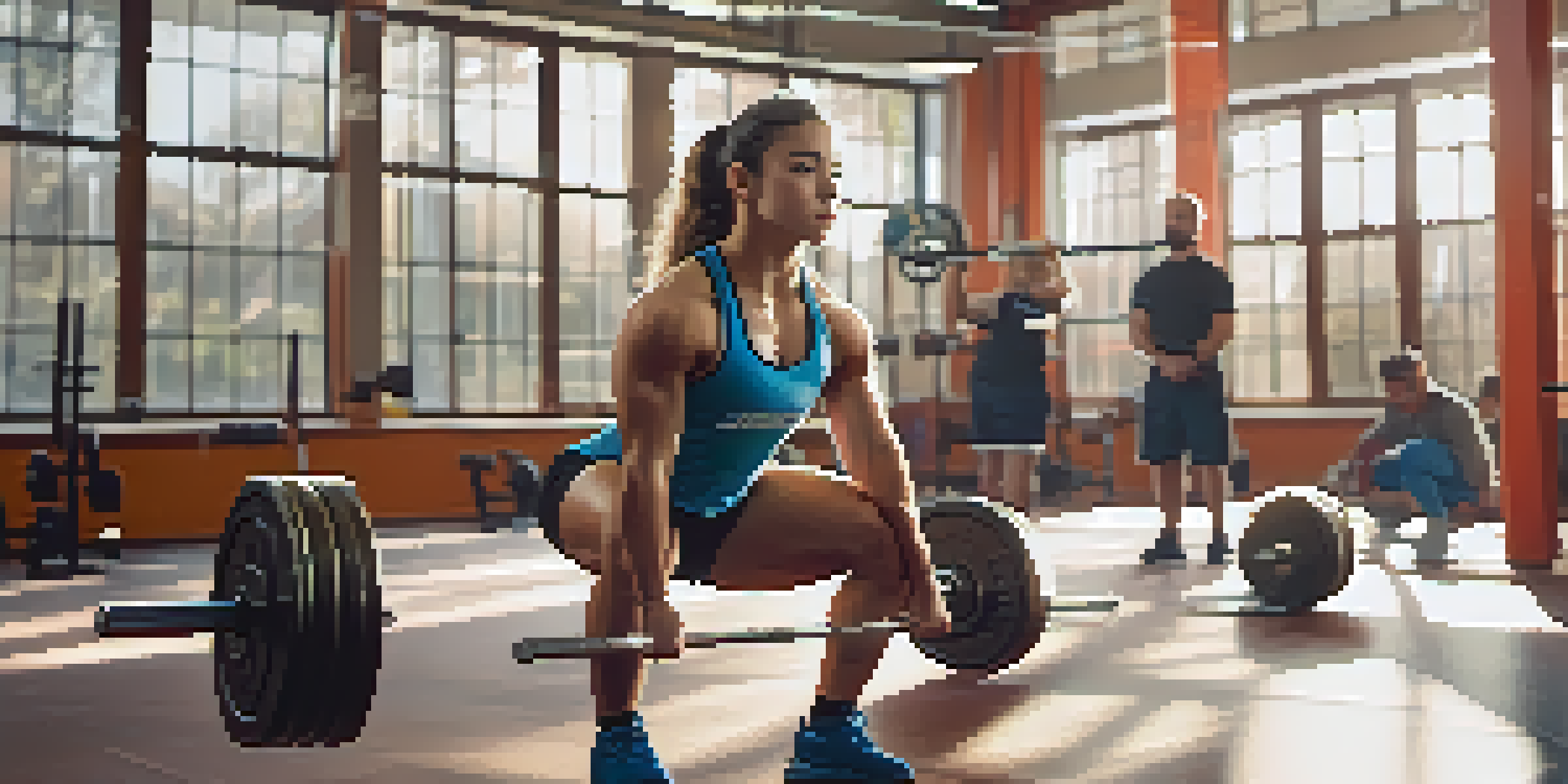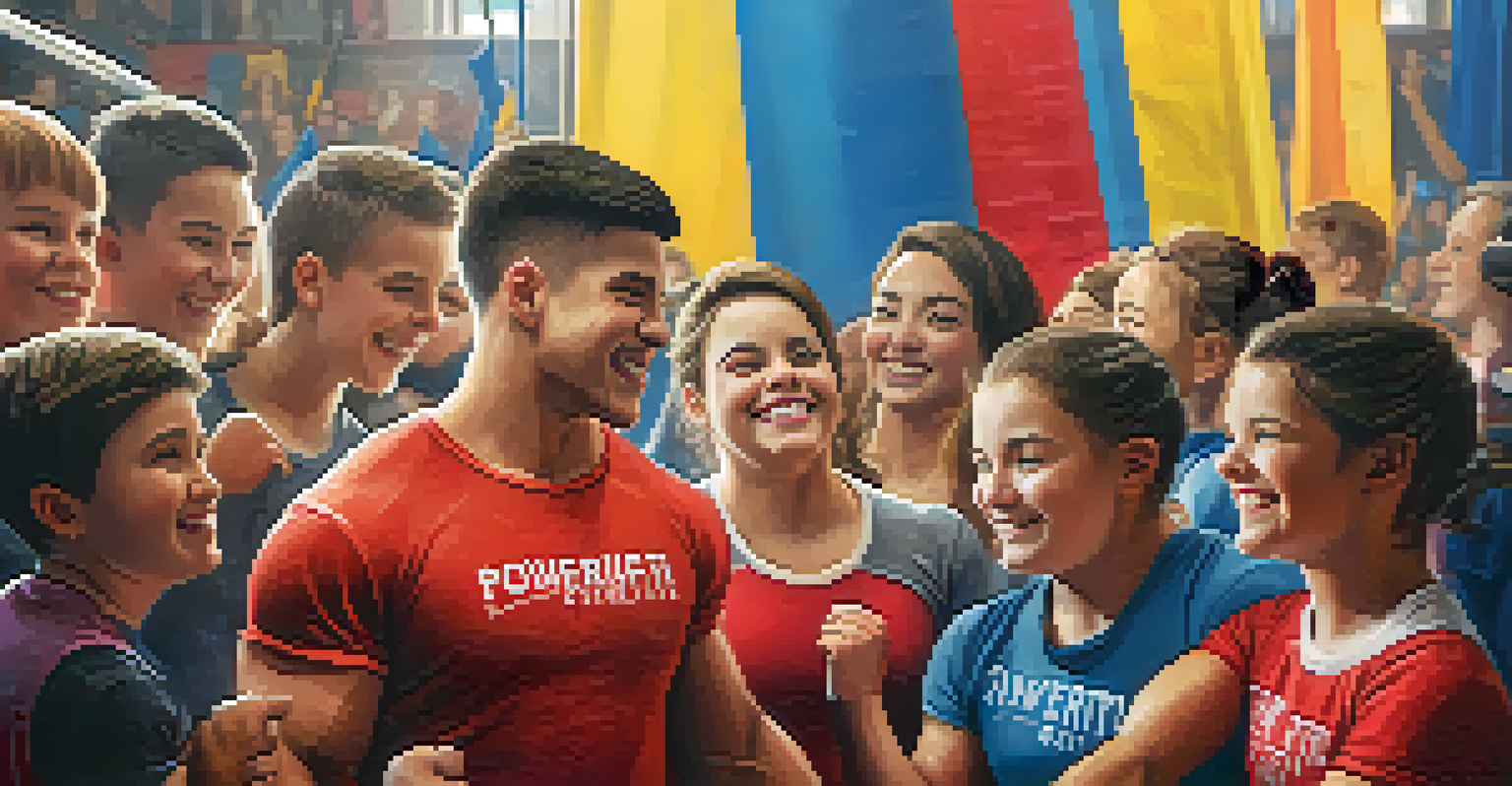Age-Appropriate Powerlifting Techniques for Young Athletes

Understanding Powerlifting for Young Athletes
Powerlifting is a strength sport that focuses on three main lifts: the squat, bench press, and deadlift. For young athletes, engaging in powerlifting can build strength, improve sports performance, and boost confidence. However, it’s crucial that these athletes use age-appropriate techniques to ensure safety and promote healthy development.
Strength does not come from physical capacity. It comes from an indomitable will.
The foundation of powerlifting for young athletes is not just about lifting heavy weights; it’s about mastering the movements. Proper technique reduces the risk of injury and helps young lifters understand their bodies better. Coaches and trainers play an essential role in guiding them through these techniques, ensuring they learn at a pace appropriate for their age and experience.
Parents and young athletes should also recognize that powerlifting is a long-term journey. The focus should be on skill development rather than immediate results. By prioritizing technique over weight, young athletes can enjoy the sport while building a strong foundation for future success.
Importance of Technique Over Weight
In powerlifting, technique is everything. When young athletes prioritize lifting heavier weights without mastering their form, they increase the risk of injury significantly. For instance, a poorly executed squat can lead to knee or back injuries, which can deter young lifters from participating in the sport entirely.

Coaches should emphasize the importance of proper lifting techniques, such as maintaining a neutral spine, engaging core muscles, and using the right stance. Practicing these techniques with lighter weights allows young athletes to build strength and confidence. Over time, they can gradually increase the weight as their skills improve.
Technique is Key for Young Lifters
Mastering proper lifting techniques is crucial for young athletes to prevent injuries and build a strong foundation in powerlifting.
Encouraging young lifters to focus on their technique also fosters a positive mindset. They learn to celebrate small victories, such as perfecting their form, rather than simply chasing heavier weights. This shift in focus can lead to a more enjoyable and sustainable powerlifting experience.
Age-Appropriate Training Programs
Developing age-appropriate training programs is essential for young powerlifters. These programs should be tailored to the athlete's age, physical development, and experience level. For example, younger athletes might focus on bodyweight exercises and resistance bands before progressing to free weights.
The only way to discover the limits of the possible is to go beyond them into the impossible.
A well-structured training program not only includes the main lifts but also incorporates accessory exercises that help build strength in supporting muscle groups. By doing so, young athletes can enhance their overall performance while reducing the risk of imbalances and injuries. Coaches should regularly assess and adjust training loads to ensure they match the athlete's growth and progress.
Moreover, integrating fun and engaging activities into training sessions can keep young athletes motivated. This approach helps young lifters develop a love for the sport while honing their skills. Ultimately, the goal is to create a positive training environment that encourages growth without excessive pressure.
The Role of Supervision and Coaching
Supervision and coaching are vital elements of a young athlete’s powerlifting journey. Experienced coaches can provide real-time feedback, helping young lifters correct their form and technique. This guidance is crucial, as improper lifting can lead to long-term injuries or setbacks.
Additionally, coaches can create a supportive environment where athletes feel comfortable asking questions. Young lifters should be encouraged to communicate any discomfort or uncertainty they experience during training. This open dialogue fosters trust and allows coaches to make necessary adjustments to ensure safety.
Age-Appropriate Training Matters
Training programs tailored to the athlete's age and development ensure safe progression and overall performance enhancement.
Parents should also be involved in the training process by understanding the principles of powerlifting. When parents are informed and supportive, young athletes are more likely to thrive. This collaborative approach between coaches, parents, and athletes creates a strong foundation for success in powerlifting.
Nutrition and Recovery for Young Lifters
Nutrition plays a crucial role in the success of young powerlifters. A balanced diet rich in protein, carbohydrates, and healthy fats supports muscle growth and recovery. Young athletes should be educated on the importance of fueling their bodies properly to enhance performance and promote overall health.
Equally important is the concept of recovery. Young athletes need to understand that their bodies require time to rest and repair after intense training sessions. Incorporating rest days into their training schedule is essential for preventing burnout and injuries. Activities like stretching, hydration, and adequate sleep are key components of recovery.
By teaching young athletes about the significance of nutrition and recovery, they learn to take ownership of their health. This knowledge not only benefits their powerlifting endeavors but also sets them up for a lifetime of healthy habits. Developing these skills early on can lead to long-term athletic success.
Setting Realistic Goals for Young Athletes
Goal-setting is an important process for young powerlifters, as it helps them stay focused and motivated. However, it's vital that these goals are realistic and attainable. Setting overly ambitious targets can lead to frustration and disappointment, which can overshadow the enjoyment of the sport.
Coaches and parents should work with young athletes to establish short-term and long-term goals. Short-term goals might include mastering a specific lift or achieving a personal best with lighter weights, while long-term goals could focus on competing at a local level. This layered approach allows athletes to experience continuous progress and satisfaction.
Supportive Community Enhances Growth
Being part of a positive powerlifting community fosters motivation, mentorship, and a lifelong love for the sport.
Encouraging young lifters to celebrate their achievements, no matter how small, builds their confidence and reinforces their love for the sport. The journey of powerlifting is as important as the destination, and fostering a positive mindset will keep young athletes engaged and eager to improve.
Fostering a Positive Powerlifting Community
Creating a supportive and positive community around young athletes can enhance their powerlifting experience. Whether it’s through local clubs or school programs, being part of a community fosters camaraderie and motivation. Young lifters can share experiences, challenges, and successes, which strengthens their bond with the sport.
Mentorship is another vital aspect of building a positive community. Older athletes or experienced lifters can serve as role models, providing guidance and encouragement to younger members. This mentorship helps instill good practices and a passion for powerlifting, ensuring that the next generation continues the tradition.

Ultimately, a positive environment encourages young athletes to pursue their goals with enthusiasm and resilience. By nurturing a community that celebrates achievements and promotes healthy competition, we can cultivate a love for powerlifting that lasts a lifetime.